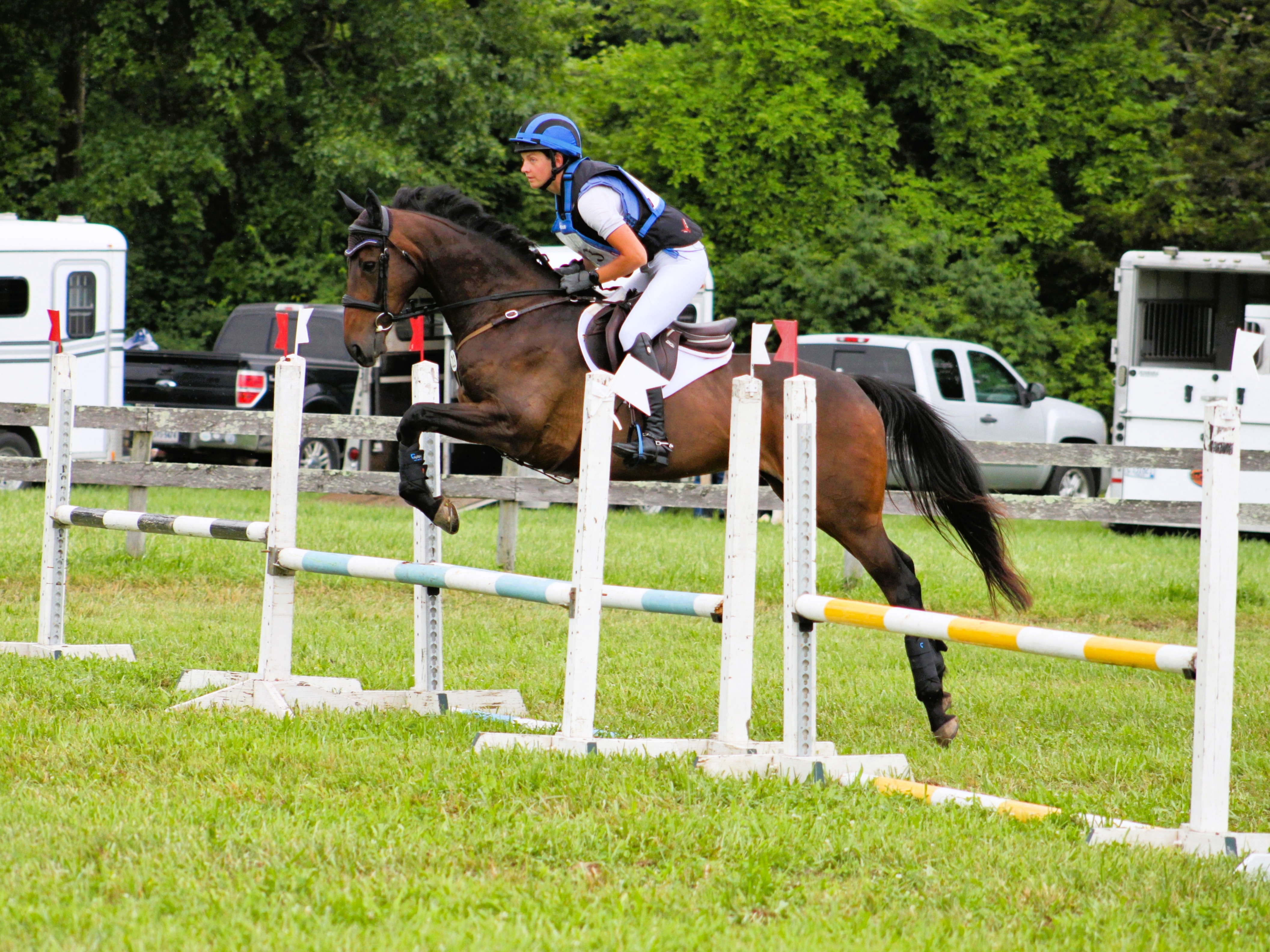When Eventing Nation reporter Abby Powell spoke with Dr. Ashley Taylor back in 2015, she was working alongside Dr. Keane in his practice, Sports Medicine Associates of Chester County, dreaming of becoming a top veterinarian. Nearly a decade later, Dr. Taylor is well on her way to realizing that dream, if it hasn’t come true already.
Now the owner of Sports Medicine Associates of Chester Country. Dr. Taylor recently founded Twin Ponds Farm, a sports medicine rehabilitation and fitness facility offering the latest technologies in equine health. Recently established, this will be Twin Ponds Farm first summer in operation.
Located in Chester Country, the rehab center is managed daily by a crack team, including long-time friend of Dr. Taylor’s Sara Stone, and Emma Ford. If you’re familiar with Chester County, then you’ll know how this little slice of Pennsylvania is truly a piece of eventing heaven. Twin Ponds Farm is closely surrounded by Phillip Dutton, Boyd Martin, Jennie Brannigan, Erin Kanara, and Caitlin Silliman, many of whom bring their upper level horses to the facility. “Within a five to 10 mile radius, we have a really strong concentration of upper level eventers, and even a lot of racehorses that train nearby, as well as jumpers and Hunter/Jumpers. It’s a really concentrated area of sport horses,” Dr. Taylor said.
Establishing the facility has been a dream of Dr. Taylor’s since she took over Dr. Keane’s veterinary practice. “It’s really fun to see these horses get better and go home and some go on to show again and some are just retired and people love them,” she said. “I’m obviously very interested in eventing, I compete myself and grew up competing. Most of my clients are eventers. Fitness is extra important in eventing and something that we spend a lot of time focusing on with the event horses. So it was a personal and professional interest of mine.”
Rehabilitation/Fitness Coordinator Sara also has a passion for equine sports medicine. “I love being in this area, it’s just so nice to be involved with this clientele. Originally my interest was more in racing, but coming here just seemed like a good progression, because I knew these people from a few years ago, before I left to go to Kentucky, and then I get to come back and it was like, nothing really changed. Having worked for Ashley, I know how she sees things and treats things. And because we’re friends, I think we have a really good level of communication.”
Dr. Taylor and her team offer a wide variety of services, including everything from treadmill work to PEMF to Functional Electrical Stimulation (FES). Dr. Taylor’s services focus on building fitness in the event horse without the wear and tear. Many of her upper level professional riders bring their horses in either pre- and/or post-ride. What’s perhaps most used by eventers is the cold saltwater treadmill.
“After a big cross country school or gallop, they’ll come here afterwards and use [the treadmill] just to loosen the horses up, break down all that lactic acid and get them really loose and comfortable after their ride because it’s the cold salt water that really helps them out,” Dr. Taylor said. “And then also some riders are using it before their dressage rides, because it really helps loosen the horses up, supple them up. People have said that they warm up a lot faster and are a lot more comfortable during their ride.”
Why salt water and not your run-of-the-mill tap water? Similar to soaking a horse’s feet in epsom salts when they have an abscess, salt water has additional benefits. “It adds just a little bit of an extra therapeutic benefit,” said Dr. Taylor. “And it is helpful for pulling inflammation out of the horse’s legs. That’s why it tends to be great because the horses are moving their large muscle groups when they’re on the water treadmill, but their distal limbs are basically getting cold saltwater treatment. So their tendons and ligaments are getting cooling anti-inflammatory therapy while their muscles are getting warm.”
This combination of inflammation-reducing cold water, as well as the additional drag of the water is a unique combination that allows event horses to build fitness without the possible damage to the legs of traditional galloping. Dr. Taylor says she wouldn’t replace traditional methods of cardiovascular fitness completely with the saltwater treadmill. “It’s not the same cardiovascular workout that you get from swimming a horse or galloping a horse, their heart rates don’t get up that high. It is very much like strength fitness, like if you were doing squats. Depending on the height of the water, we can increase the horse’s mobility in their back, their movement, all that. So we use the water height as a tool to help the horses move.”
That being said, you wouldn’t want to jump right into the highest water level available. Dr. Taylor builds the horses in her program up to deeper levels over time, depending on the feedback from the horse. “Sara is really good at talking to the rider and evaluating the horse as they’re going and seeing what they can tolerate or what’s too hard,” Dr. Taylor said. “And we have a really precise record keeping system so that we can follow every horse every time they’re on the treadmill. We can see any changes, good or bad.”
If you’re planning on using Twin Ponds Farm’s services to get your event horse fit, Sara says the best thing to do is start early and come in often. “I want them to be training at what I call full capacity for a little while before the event. So I think it takes about seven or so sessions to get them to where I really think I can put the water up to knee and above– in that range. And then work them up incrementally to a time where they’re in there for about 25 minutes.”
There’s a fine line between building your horse’s fitness and overdoing it, which is why having the experience of Dr. Taylor and Sara on hand to guide the horse’s program is so valuable. “I want them coming in quite a bit before crunch time, so the riders know how the horse is gonna react,” Sara said. “For example, I don’t want them to go into their jump school with a tired horse, you know? I need to know how they respond to the work to really lock in the right program. But the more you can do, I think the more benefit.”
Dr. Taylor and Sara work hand-in-hand with their mentor, German veterinarian Dr. Mathias Boughman, who has been using cold saltwater treadmills for equine fitness for the last 30 years. “Dr. Boughman found that by getting their bodies so much stronger, their legs only benefit. He found less soft tissue injuries as they were getting their core and their backs and all those things strong,” Sara said. “I think it can be a game changer for equine fitness and injury recovery.”
Their program was really put to the test when a horse with a fractured shoulder came into their facility. “The owner basically called me and said, ‘My vet said I should put my horse down and I know you rehab horses. Can you fix him?’ And I said, ‘I have no idea.’ Because it’s not the wrong recommendation to put the horse down by any means. But you know, at that point, he was at least comfortable enough to be stall rested. And so we started there,” Dr. Taylor said.
Sara and Dr. Taylor pulled out all the stops for the horse with the fractured shoulder. At first, their hope was that he could possibly be rehabilitated into a pasture puff, but as he became more and more sound, they began to wonder if he could possibly be a riding horse once again.
“We used a lot of different modalities with the Functional Electrical Stimulation (FES) and the laser, because he had a lot of atrophy from the injury. So we use the FES to help build the muscle in the shoulder while he was on stall rest,” Dr. Taylor said. “And then we just gradually increased his turnout and his hand walking, we did some cavaletti for physical therapy to try to get him to like lift the leg because he was kind of dragging the toe. And then we progressed him to the treadmill, which was once again helping him increase the range of motion in the leg.”
As Sara engineered a program for him on the treadmill, he began to get stronger and stronger. “He was interested in the treadmill, because we kind of got to a point where the water was at his knee. And we’re like, ‘Okay, well, he’s here, he’s doing really well. Let’s play with it. Let’s raise the water up even higher and see what happens,’” Sara said. “And I feel like at the end when Ashley injected his knee, and we raised the water up, I think that last little bit of added strength, added movement really helped him.”
Now the horse is back in full work, he’s turned out with his pasture mates and is being ridden on a near daily basis by his owner. Without surgery and only through non-invasive treatments, the horse went from a fatal injury to healthy, happy, and back under saddle.
Many people view rehabilitation facilities as just for extreme cases like the horse with the fractured shoulder. And while these extreme cases make for great studies on how these modalities can help our horses heal from injury or exercise, the reality is that a place like Twin Ponds Farm can prevent horses from being injured in the first place by increasing fitness without the wear and tear.
“A lot of these tools can be used in conjunction with a healthy, normal horse that you’re trying to improve their condition or their fitness, and a lot of them also are used to help promote healing for horses with injury,” She said. “Our goal is just to offer a resource for horse owners and other veterinarians, whether it’s for a horse that’s sick or injured or just a horse that is competing that you want to try to improve or maintain.”
Go eventing.



















